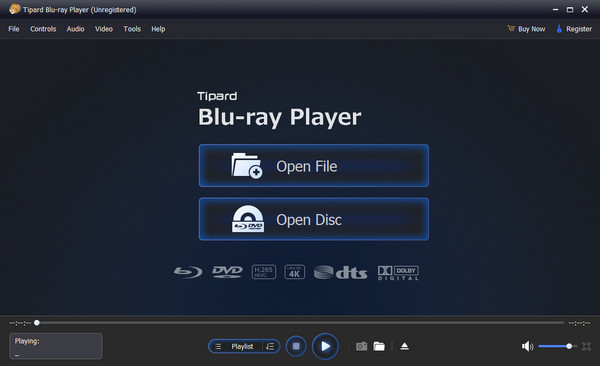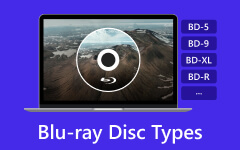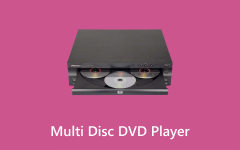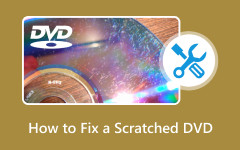LaserDisc vs DVD Review: Factual Information and Product Comparison
In this era of modern technology, many people are still looking for LaserDisc technology, but are they still good? Is LaserDisc better than DVD? This article will answer that question, and we have compiled features and functions that might help you decide on these two products. If you have decided to pick a DVD, we also found a product that fits your needs. This product will help you organize your files by quickly rendering and processing them. Learn more information about our topic, LaserDisc and DVDs by reading the content below.

Part 1. What is a LaserDisc?
LaserDisc was a format created by Philips and MCA. It utilizes larger discs than the DVDs and CDs we are used to. The disc is up to 12 inches in diameter, and a particular player must encode video and audio information on the disc's surface using laser technology. Regarding video quality, LaserDiscs have much higher video quality than VHS tapes. LaserDisc resolution equals about 425 lines of analog TV resolution compared to VHS's 240 lines.
The audio quality on LaserDiscs was also superior, supporting uncompressed PCM digital audio and multi-channel formats like Dolby Digital. Such features appealed greatly to anyone who prioritizes audio quality. Despite its technological advantages, LaserDiscs never gained popularity due to their high cost, the size and weight of the discs, and the advent of the more compact and user-friendly DVD in the late 1990s.
LaserDiscs found a target market in the US, Japan, and some other Asian countries before the early 2000s effectively phased out the format. However, during its time, it was a favorite format due to its video and audio quality. DVDs offered similar or better video quality, a larger storage capacity, and were more convenient to handle and store.
Part 2. LaserDisc vs. DVD
Comparing LaserDisc to DVD can be tough if you lack the knowledge and key points to compare. In this part, we have already compiled features that might define the difference between these two products:
Physical Format
Laserdiscs are analog discs 12 inches in diameter, resembling the size of a vinyl record. They require flipping or changing discs for longer movies, as each can only hold 60 minutes of video. DVD discs are much smaller, at 4.7 inches in diameter and can store data digitally. A single-layer DVD player can hold up to 4.7 GB of data, enough for about two hours of video at 720p.
Video and Audio Quality
LaserDiscs' video and audio output is about 425 lines of horizontal resolution, or a resolution higher than VHS. Later versions may include support for digital audio formats like Dolby Digital. DVD provides a standard resolution of 480p digital media, which is cleaner and more compact due to digital compression technologies. In multi-channel setups, DVDs also support various digital codecs, including DTS and Dolby Digital.
Storage Capacity
LaserDiscs are physically large, but this doesn't translate to more storage capacity. A typical movie with LaserDiscs often requires multiple sides or discs. However, a DVD has more storage capacity due to digital compression, allowing for additional features like multiple languages, subtitles, commentary, and more.
Durable and Convenience
Laser discs are larger and inconvenient to own and handle. They are also more prone to wear and tear from handling and environmental factors, which can be a deal breaker for many. DVDs are smaller, durable, and portable. DVDs are easier to produce, distribute, and store, which makes them a more convenient option for many people.
Cost and Accessibility
Generally, LaserDisc players and discs were more expensive than VHS and later models of DVD systems, which limited their market to enthusiasts and collectors. While DVDs are more affordable and widely available, they quickly replaced VHS as the standard for home video and became common in homes and rental stores.
Market Impact
Due to the cost and physical bulk of the discs, LaserDiscs has never achieved mass-market success outside of niche markets in the US, Japan, and other countries.
Part 3. The Best Way to Play DVD/LaserDisc
Tipard Blu-ray Player is a downloadable application dedicated to playing DVDs or LaserDiscs. It is available on Windows and Mac and has a simple and intuitive user interface. Built with a powerful feature, it lets you render multiple discs at once, making viewing files a breeze. This application utilizes and easily manipulates older technology for enthusiasts or users who want to try DVDs or LaserDiscs. You can try this application by clicking the download button below.

Further Reading:
Blu-ray vs. DVD vs. CD: Learn Differences of the Discs
Introduction & Comparison of DVD-R, +R, and Other DVD Types
Part 4. FAQs about LaserDisc vs DVD
Are LaserDiscs still produced or available for purchase?
No, LaserDiscs are no longer produced, but their availability for purchase is limited. Production ceased in the early 2000s. While collectors may have them available on the secondary market, the production of these LaserDiscs was limited.
Are there any notable collectors' items or rare editions available on LaserDisc?
There are notable collectors' items and rare editions available on LaserDiscs. The collectors' prize Criterion Collection was released, and limited-edition box sets, promotional and international films and test discs were also released, making them highly sought after by enthusiasts.
What were some of the drawbacks of LaserDisc compared to DVD?
LaserDisc had some drawbacks compared to DVD, including limited storage capacity, lower video quality, vulnerability to damage from scratches, and less advanced interactive features. These factors were the reason why DVDs were able to adopt and dominate it.
Did any filmmakers or enthusiasts prefer LaserDisc over DVD?
Some filmmakers and enthusiasts preferred LaserDisc over DVD for its analog qualities, larger artwork, and unique packaging. Some of the rare contents were exclusively available on the LaserDisc, making it attractive to collectors and enthusiasts despite its technological limitations, unlike the DVD.
Did LaserDiscs have region coding like DVDs?
Yes, LaserDiscs have region coding like DVDs. The region coding divided the world into different zones, limiting playback to discs from the same region and being less strict. Also, it could be bypassed more smoothly and easily than DVDs.
Conclusion
After you read about LaserDisc vs DVD, we assume that you have already decided which product to use. If you still need help, kindly reread this article for guidance.







